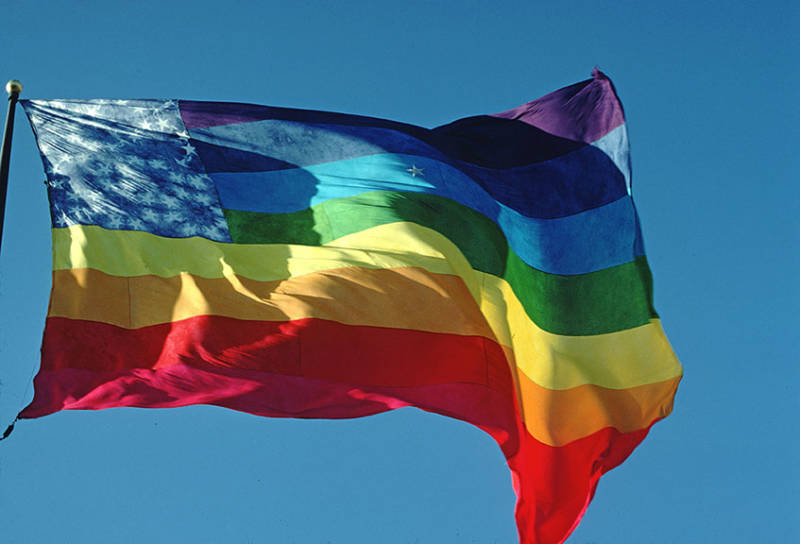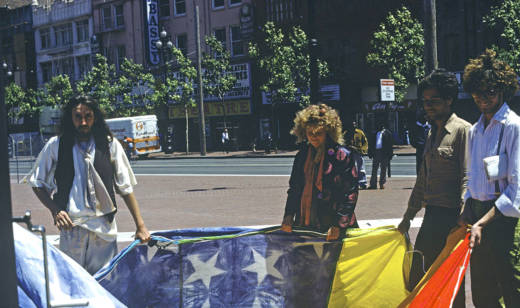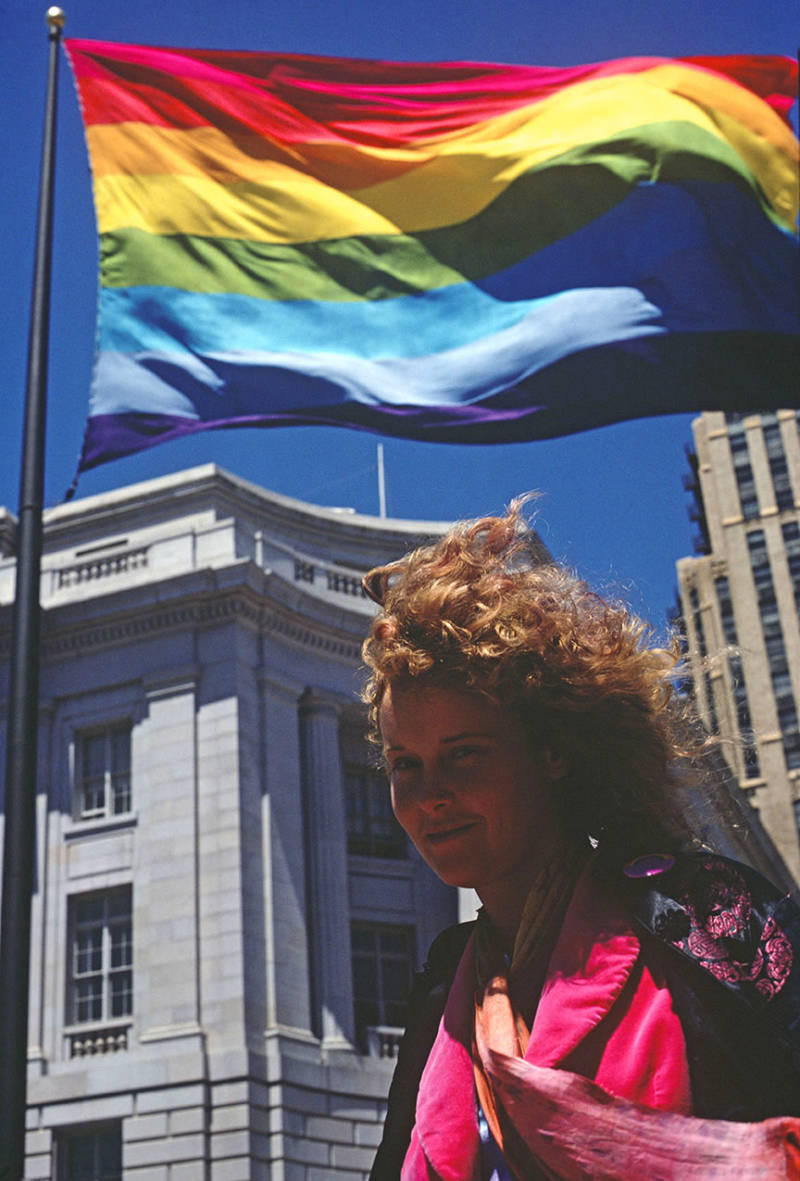One of the guests riding in Sunday's San Francisco Pride Parade may not be well-known, but many are familiar with art she helped create.
Lynn Segerblom is one of the three main artists and activists who helped make the original rainbow flag, long before it became synonymous with gay pride.
The late San Francisco-based activist Gilbert Baker often gets credited for coming up with it, but on the 40th anniversary of the flag's creation, Lynn Segerblom wants people to appreciate the role played by its lesser-known creators, including James McNamara and herself.
Segerblom says they actually made two flags, and they were huge: 40 by 60 feet large.

“Those were very large heavy flags,” Segerblom says. "There's no way one person could even carry one of those much less make one all by themselves.”

